
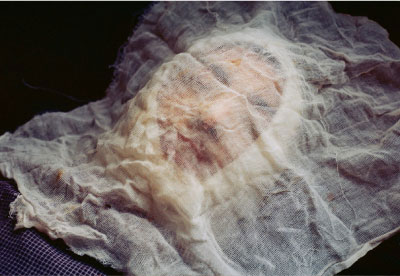
All images courtesy of Stephanie Sinclair / VII (www.viiphoto.com)


Since 2005, over 700 women have set themselves on fire in Afghanistan. Most incidents were caused by repeated abuse, fear of their husbands and petty household disputes.
Self-Immolation in Afghanistan: A Cry for Help is a series of photographs taken by photojournalist
Stephanie Sinclair, one of fifty-five artists chosen for this year’s
2010 Whitney Biennial. Over the course of three years, Sinclair documented a day in the life of Afghan women being treated for life-threatening, full-body burns. More jolting than the images alone, is the knowledge that these victims did this to themselves. Shockingly personal, the photos depict already hopeless women in the throes of utter despair, anguish and vulnerability. In Afghanistan, to obscure the daily violence taking place in their homes is commonplace — almost expected — making Sinclair’s unique point of view all the more jarring and significant. In this exclusive interview, Stephanie Sinclair talks to PLANET about abysmal desperation, inklings of change, and the indelible power of photography.
(more…)
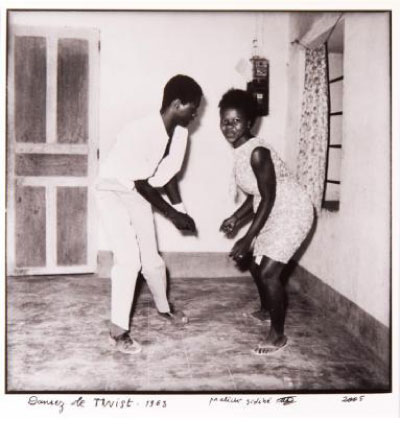
Dansez le Twist, Malick Sidibe. 1963.

As efficient and magical as digital photography has become, nothing can compare to the raw, visceral quality of a film print. Maybe it’s the surprise factor, the photographer’s inability to really know what they’ve got until it’s too late, but film assumes a significance and power digital SLRs still have trouble competing with.
Malick Sidibe’s new exhibit, “Other Africa”, is a small collection of black and white prints influenced by the people and street scene of Bamako in the 1960s and 70s. The images capture the infectious spirit, rhythm, and lightheartedness of post-colonial West Africa at a time when immense shifts of the paradigm and culture were taking place. Whether it’s a staged portrait or a spontaneous dance move, there’s a refreshingly honest, intimate quality to the gelatin prints.
Sidibe purchased his first camera in 1956 when he was about 20 years old. From night clubs to boxing matches to riverside picnics, he soon became the only photographer documenting the kinetic street culture and pulse of the neighborhood. Sidibe’s insider status permitted him access to an era bubbling over with impulsiveness and life. His studio became a popular hangout and he would regularly set up portraits with the youth that hung out there, reinventing his subjects using outrageous costumes and props. The results are spur-of-the-moment glimpses of West Africa in the crux of curiosity and optimism. The results are a revelation of Sidibe’s deep passion for people and his country.
(more…)
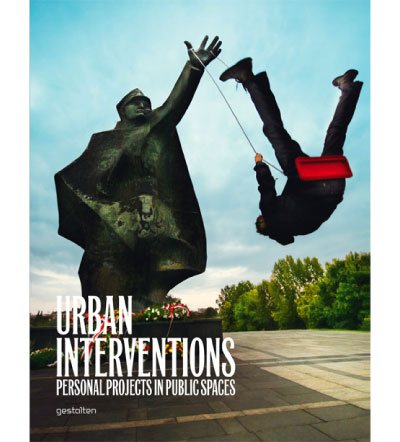
Courtesy of Gestalten Books

I first witnessed urban interventionism at an intersection in La Serena, Chile in 2009. I watched transfixed as a young performer expertly juggled five plastic pins in the middle of the road. He completed his routine and gave a quick bow before darting quickly from one car window to the next, collecting money from drivers’ outstretched hands, jumping back onto the sidewalk seconds before the light turned green again. Though this is a loose example of public art, during the course of my travels through Chile and Argentina, I witnessed beat boxers, mimes, dance troupes and cheerleaders all with the same technique, using the intersection as their stage.
Urban Interventions: Personal Projects in Public Places, due out this March, could very well turn the new art movement into a household word. A creative conglomerate of graffiti, activism, and found street art, the book pays tribute to the most exciting wave of artwork to hit public spaces since Banksy took Bristol by storm in the late ’90s. Urban interventions use ordinary outdoor components to transform everyday landscapes into interactive artwork for the masses. As a result, alleyways become galleries, bus stops morph into studios, and street signs act as canvases.
(more…)

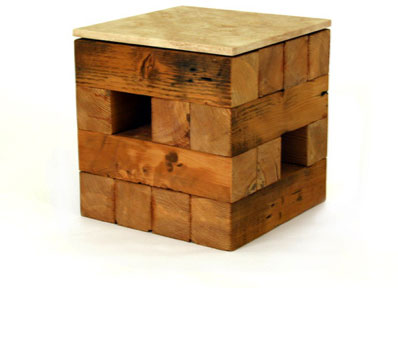
Photography courtesy of Viesso

Los Angeles has always had a knack for turning one man’s trash into another man’s table. Fortunately, custom furniture gurus, Viesso, know how to make it look great too. Constructed entirely out of reclaimed wood beams salvaged from rundown LA buildings, Viesso’s new Koper table is an eco-savvy cross between Jenga and a Rubik’s Cube. Fun, earthy, and versatile, the Koper has a certain charm not typically attributed to home furnishings. Viesso is something of a pioneer in furniture design, reconstructing the entire shopping process by encouraging individuality, efficiency, and smart innovation. Far from sifting through a showcase full of generic furniture, each table, sofa, and bed is customizable, offering earth-friendly options and materials. To further reiterate Viesso’s commitment to the planet, all products are manufactured locally. True to Viesso form, the Koper table ranges in sizes from 16” X 16” to 36” X 36”, with the option of a marble top. Custom tables start at $244.
(more…)
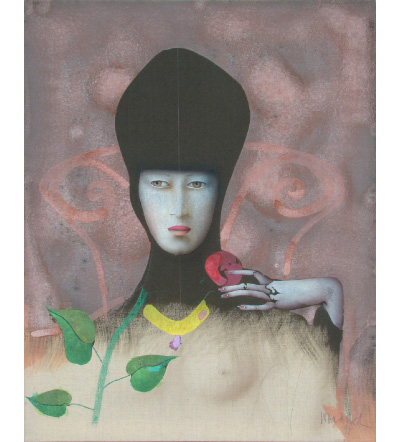
After Fountaine Bleu, Paul Wunderlich

For decades, Paul Wunderlich has been one of the most iconic and influential artists you’ve never heard of. Utter his name outside of art circles and chances are you’d get nothing more than a lifted eyebrow and shrug of the shoulders. But one look at his visionary, surrealistic motifs and discomfitted color palettes and off go the flares of visual recognition.
Long deemed the Father of Fantastic, or Magic, Realism, Wunderlich is sort of like the Gabriel García Márquez of modern art, lending no less than sixty-two years of his life to the study and experimentation of various art media. After perfecting his lithograph technique in Paris between 1960 and 1963, Wunderlich moved on to tackle sculpture, drawing, and painting with airbrush and gouache. Regardless of the tools, Wunderlich brought an innate curiosity and intellect to each creative mode he dallied in, paying no mind to the critical recognition the outcome did or didn’t receive. Nevertheless, Wunderlich has enjoyed long and fruitful acclaim over the course of his career, selling out solo shows across Europe, Asia, and North America. In 1994-95, a retrospective of his work was featured in a scattering of major museums all over Japan.
But even more telling than the art itself is the vast influence his work has had on pop-culture, high fashion, photography and music.
Long-time friend and gallery owner, Christian Hohmann sits down with PLANET to reminisce about Wunderlich, the artist and the man, shedding some much-desired light on an unsung hero of surrealism.
(more…)
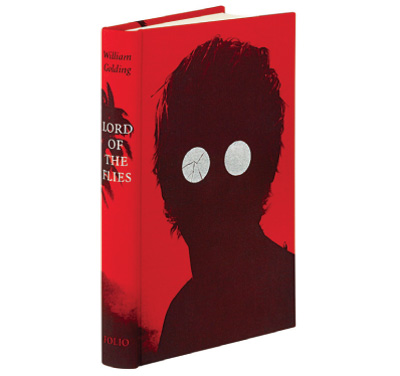
Lord of the Flies cover and illustrations by
Sam Weber.

“Maybe there is a beast…maybe it’s only us.” First published in 1954, William Golding’s Lord of the Flies became an instant classic for its unrelenting, often horrifying portrayal of human nature, primitive instinct, and the disintegration of civilization. This winter, The Folio Society breathes fresh life into the polemical novel with a cloth-bound illustrated edition that both art fans and bibliophiles will appreciate. The project was truly a dream job for Alaskan-born illustrator Sam Weber whose visceral imagery lends the fable a contemporary level of pathos not yet explored in previous illustrated editions. At once understated and formidable, each painting is a reminder of how fragile the infrastructure of society can be in the midst of true evil. Sam Weber was kind enough to offer PLANET a few moments of his time for this exclusive interview.
(more…)
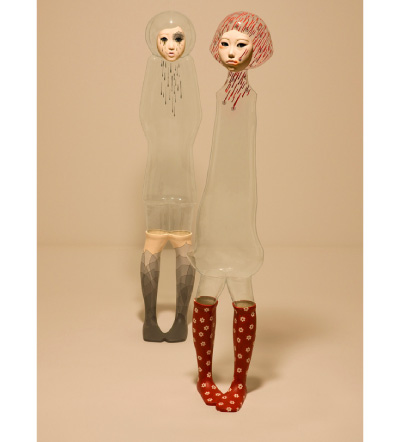
The Diguised Jing Young Yu, 2009.

It’s not every day that an artist is able to stake her claim in the art world using an invisible medium. Yet with each pigeon-toed, see-through figure she creates, that is exactly what Korean sculptress, Jin Young Yu has done. Constructed entirely out of a self-formulated PVC (glass and clear plastic just weren’t transparent enough), each invisible man, woman, and child is a three-dimensional examination of hypocrisy, domestic secrets, and the ongoing battle between a private versus public self.
Created in full scale and often standing four feet tall, the translucent sculptures are as awe-inspiring as they are painstakingly conceived. Every limb, smock, and random accoutrement is created individually before being reassembled and woven together with transparent thread, taking Jin Young around forty days to make one figure.
Much like each somber-faced character, the artist has nothing to hide when it comes to sharing her worldview. “My figures express the loneliness of people living today. The transparent body means a perfect shield that makes it possible to hide itself anywhere, while the crying face represents a warning: ‘Don’t come towards me!’ I intend to remind viewers of the loneliness of people in this modern society, where there is little of true communication.” And as for an overall theme? “I want to get away from the plastic smiles and fake facial expressions,” she says. Thus is the essence of Jin Young’s stoic army.
(more…)
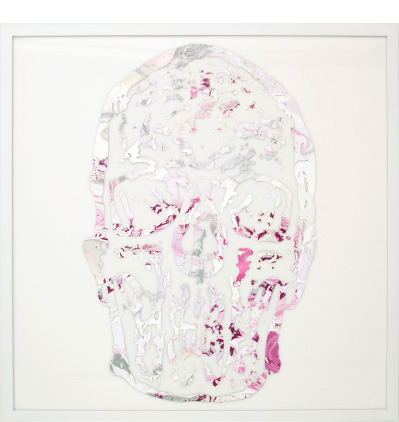
Paradise Regained, Zane Lewis. 2009.

Leave it to the Wall Street Journal to really put the heat on a guy. Zane Lewis, an emerging artist based out of Brooklyn and San Antonio, experienced it firsthand several years ago following the publication of a little article. Named one of ten “23-Year-Old-Masters” in the 2006 story, Lewis garnered some serious artistic accolades, and a hearty buzz of expectations.
Yet three years later, working under pressure and status, Lewis still appears keen to the challenge. A new solo exhibit, Watch Me Slowly Death, is scheduled to open this month at New York’s Mixed Greens Gallery, right in time to kick off the fall art season in Chelsea.
The exhibit will feature a series of mixed media paintings on Plexiglas, each piece a not-so playful juxtaposition aimed at the consumer excesses and youth-obsessed idolatry of our culture. Each untitled piece depicts luxe and glossy advertisements torn from the pages of a fashion magazine, overlain with neon, graffiti-like drippings of paint. The images are instantly recognizable (for who hasn’t seen those ads for Chanel No. 5?) yet slightly distorted, like contemporary idols warped by the sun. Religious iconography, mirrors, and collage are also used to further the themes of death, power, and decay. The show is a mature, subtle investigation of what it means to live and consume in the face of global economic crisis, inevitably raising many questions. Is it still possible to live humbly? Does recession ultimately lead to rebirth?
(more…)
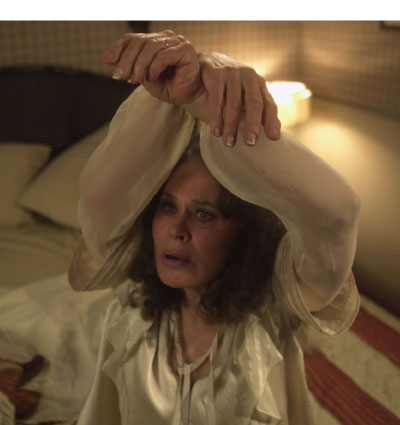
Still from Meet the Eye, 2009. Courtesy of Aїda Ruilova and Salon 94, New York.

Aїda Ruilova is no stranger to the voyeuristic, often macabre storytelling devices made famous by experimental film icons Sergei Eisenstein and Maya Deren. Influenced equally by structural cinema of the 1960s and vampire movies of the 1970s, the New York-based filmmaker-artist appears at home working with contrasting styles. Ruilova’s short films employ a series of B-movie horror tactics, avant-garde editing, and abstract montages of gesture and sound. The repetitive use of fragmented dialogue (“Which one is me?”) and symbolic imagery (peepholes and basements) add complicated layers of self-awareness to people caught in nightmarish situations. Despite the filmmaker’s mysterious characters and affinity for disorientation, the work is not without pathos. Viewers find themselves slyly twisted into the role of witness and accomplice, furthering the eerie spectrum of the camera’s gaze. Meet the Eye is Ruilova’s latest work, created as part of the Hammer Museum’s Artist Residency Program and appropriately shot in Los Angeles with two of the city’s cult figures. Artist Raymond Pettibon and fringe-actress Karen Black play a couple trapped in a hotel room. The film treads a thin line between mental confusion and sheer illusion. Pettibon monotones the same lines over and over, Black anguishes theatrically about the room, attempting to recall a fatal memory just beyond her grasp.
(more…)
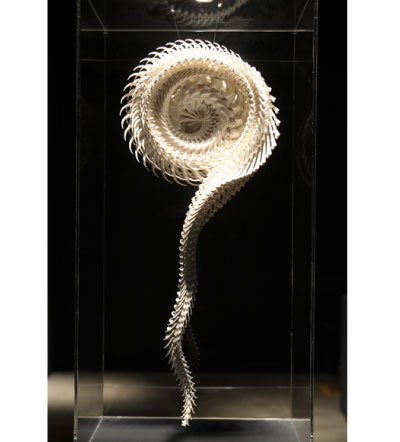
SP2 ‘New Born’ (Viper A), 2007. Photography by Keizo Kioku. All Images Courtesy of the Artist and YAMAMOTO GENDAI

Odani Motohiko knows how to generate a reaction. In his first solo show back in 1997, the artist arranged for a nurse to come and take 1.4 liters of his own blood for an installation he was planning entitled, Fair Completion. A small fan in the corner of the room was used to float a series of soap bubbles filled with a single drop of that blood across the gallery. After a few moments the soap bubbles would burst, sending ruby splatters across the white space and a collective chill down the spines of the audience. At the Tokyo opening, a single woman was overheard saying, “Isn’t it beautiful?” Though Odani’s work seems purely confrontational, the themes he explores are as interwoven as the Tokyo streets and hold just as many questions. Time, the human body, and primitive senses such as sensuality, shame and fear are evident in everything Odani creates, including his newest installation, 9th Room, at the Museum of Contemporary Art Tokyo. The piece is made up of an enclosed room of waterfalls projected onto four different screens. The ceiling and the floor are mirrored, encapsulating anyone inside with a 360-degree sensation of falling. Terrifying, yes, but extremely primordial; the title is a reference to Dante’s ninth and final circle of Hell. Installation aside, Odani is equally at home working in digital animation, photography, and sculpture. His recent return to the latter has the art world buzzing that this “dead art” may be in for a little shock treatment. Until then, trust that Odani Motohiko will keep the answers hanging in the air.
(more…)







 Facebook
Facebook Permalink
Permalink Digg
Digg Reddit
Reddit LinkedIn
LinkedIn StumbleUpon
StumbleUpon Tumblr
Tumblr












